Principal Investigator
Locations
Study Code
Study Status
Abstract
The current treatment for Systemic Lupus Erythematosus (SLE) patients with class III and class IV glomerulonephritis consists of high doses of corticosteroids, often accompanied by the cytotoxic agents cyclophosphamide or mycophenolate mofetil. Despite this aggressive therapy, 65%–90% of patients do not achieve remission within 6 months. Even if treatment is continued for 24 months, approximately one-third of SLE patients have an inadequate response. Moreover, significant adverse events (AEs) are common, especially with long-duration therapy. Clearly, safer and more effective therapies are needed for SLE.
Abatacept (Orencia® Bristol Myers Squibb, Co. [BMS]) is a soluble fusion protein that consists of the extracellular domain of human cytotoxic T-lymphocyte-associated antigen 4 (CTLA4) linked to the modified Fc (hinge, CH2, and CH3 domains) portion of human immunoglobulin G1 (IgG1). It has been approved by the U.S. Food and Drug Administration (FDA) for the treatment of RA in adults.
In murine models, combination therapy with CTLA4Ig and cyclophosphamide was found to be highly efficacious for treating both early and established lupus nephritis in murine models. Therapy with a single dose of cyclophosphamide and 2 weeks of CTLA4Ig dramatically reversed nephritis in B/W mice, an effect that persists for many weeks and appears to be mediated by the deletion of activated cells and by a mechanism related to the modulation of the effector response to tissue immune complex deposition.
This is a 1:1 randomized, double-blind, controlled phase II multicenter trial in individuals with lupus nephritis. The experimental group will receive a course of abatacept (at weeks 0, 2 and 4, then every 4 weeks until week 24), plus low dose cyclophosphamide every 2 weeks for 12 weeks, followed by azathioprine for 16 weeks. Participants randomized to the control group will receive abatacept placebo and cyclophosphamide followed by azathioprine as described for the experimental group. All participants will also receive a prednisone regimen. The primary endpoint, the proportion of participants who achieve a complete response, will be assessed at 24 weeks. Thereafter, subsequent therapy will depend on the study group and the nature of the response assessed at 24 weeks.
Participants must be 16 years of age or older and have active lupus nephritis, as defined by a kidney biopsy within the past 12 months.
